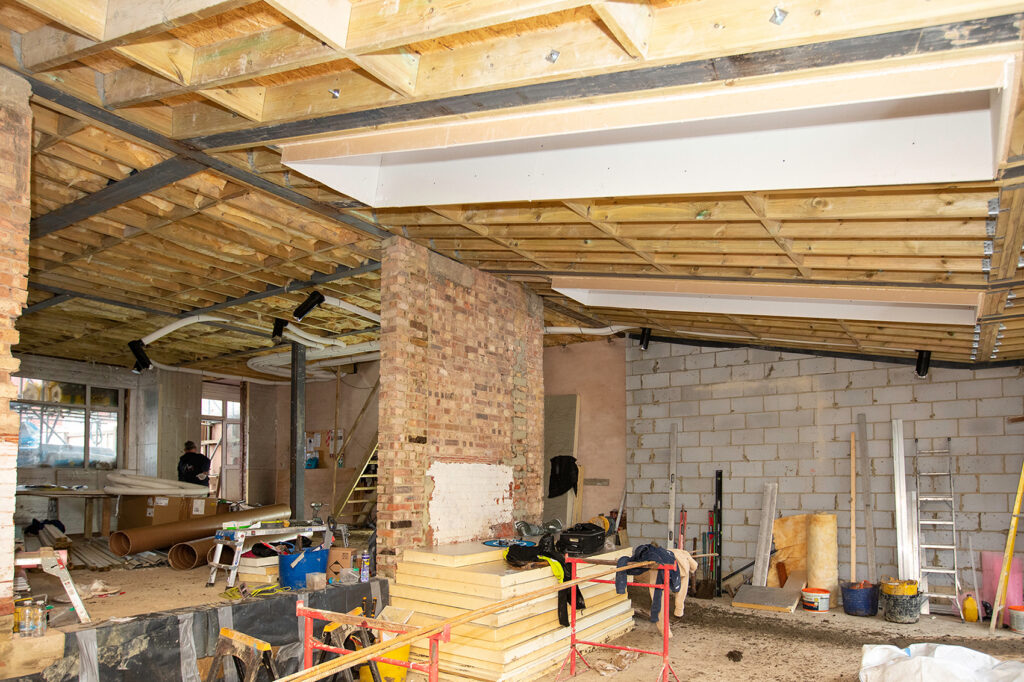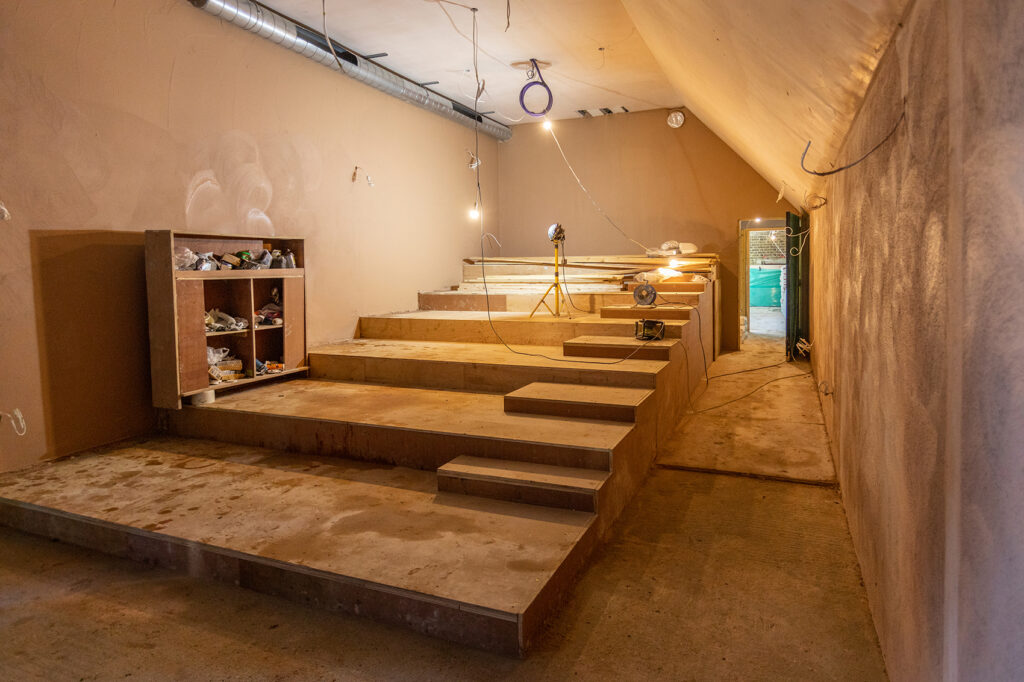Building Construction Through the Lens of Sustainable Architecture
As a design-led architect studio with over 30 years of combined experience, we’ve dedicated our careers to integrating sustainable practices into every building we create. Low energy consumption and low embodied carbon are not just buzzwords, they are principles that guide our designs. Below, we will delve into the building construction process, highlighting the critical stages of First Fix and Second Fix, while threading in the significance of sustainable practices in modern UK construction.
Unveiling the Jargon: First Fix and Second Fix
In the UK and Ireland’s construction industry, ‘First Fix’ and ‘Second Fix’ are terms that simplify the stages of building construction. Although used widely, these terms may appear abstract to those unfamiliar with the construction process.
First Fix: Laying the Foundations
The ‘First Fix’ (sometimes described as shell and first fix) is the initial phase of construction, extending from laying the foundation to the application of plaster on the internal walls. This phase is essentially the construction of the skeleton of the building, including walls, floors, ceilings, as well as the installation of cables for electrical supply and pipes for water supply.
To shed more light, the elements involved in the First Fix include but are not limited to: drainage systems, soil and copper pipes, mechanical ventilation systems, electrical back boxes, cable runs for electricity, telephone, data and audiovisual services, door frames, stair wells, sound insulation and plasterboarding.
During this stage, our studio ensures the incorporation of low energy and low embodied carbon design principles. For example, by choosing responsibly sourced materials for structural elements (low embodied carbon) and promoting energy-efficient solutions like Mechanical Ventilation Heat Recovery systems (MVHR), Airtightness, Air Source Heat Pumps (ASHPs) and Solar Photovoltaics (Solar PV) panels, we minimise the carbon footprint and enhance the future building’s efficiency.

Second Fix: Breathing Life into the Skeleton
Upon completion of the First Fix, we move on to the ‘Second Fix’, which entails all the work post-plastering. It includes connecting electrical fixtures to cables, attaching sinks and baths to pipes, and fitting doors into doorframes. It’s during this stage that the building begins to take shape aesthetically, transforming from a mere skeleton into a ready-to-use structure.
Sustainability continues to be a critical consideration at this stage. We adopt low-VOC paints and finishes to enhance indoor air quality, install energy-efficient appliances, and utilise sustainably sourced fixtures, thereby promoting a healthier, more comfortable and eco-friendly living environment.

The Construction Process: A Synchronized Ballet
The clear division between First Fix and Second Fix is more than just a convenient description; it’s a strategic approach that enables efficient project management. Different trades, including electricians, plumbers, and carpenters, usually have to make two separate visits to a building under construction. By using this terminology, project managers can effectively communicate the project’s progress, making it easier for everyone involved to understand.
In this context, it’s not uncommon to hear phrases such as “first fix complete” or “second fix 50% done”. While some construction companies may specialise in either first or second fix work, most, including ours, navigate both phases seamlessly.
The Analogous Phases in North America
In North America, the stages of First and Second Fix are often referred to as ‘roughing in’ and ‘finishing’, or ‘rough-in’ and ‘finish work’. The concept is similar, with roughing in equating to the more structural, raw tasks of the First Fix, and finishing involving the polished, final tasks associated with the Second Fix.
The Third Fix: Hosting Technology
Modern society’s reliance on technology has necessitated a further division in electrical installations, introducing a ‘Third Fix’. This stage includes positioning and securing accessory boxes (First Fix), preparing and positioning cables (Second Fix), and the termination of conductors to accessories and protective devices (Third Fix).
The Third Fix plays a pivotal role in hosting sensitive electronic equipment, requiring dust-controlled conditions for installation. This is particularly relevant for spaces like server rooms, which require a virtually dust-free environment akin to medical or scientific research laboratories and cleanrooms in the semiconductor production industry.
In line with the UK national building specifications, British Standard 5295:1989, the Third Fix stage must maintain stringent environmental standards to control particulate contamination, temperature, and humidity. It is only when these conditions are met that the build-out of clean room spaces can commence.
In Conclusion
Navigating the building construction process, particularly the stages of First Fix and Second Fix, is akin to choreographing a well-orchestrated ballet. As architects, we are not mere bystanders, but conductors, ensuring each movement aligns with the symphony of sustainability. By integrating low energy and low embodied carbon principles, we not only construct buildings but shape healthier, eco-conscious living environments.
